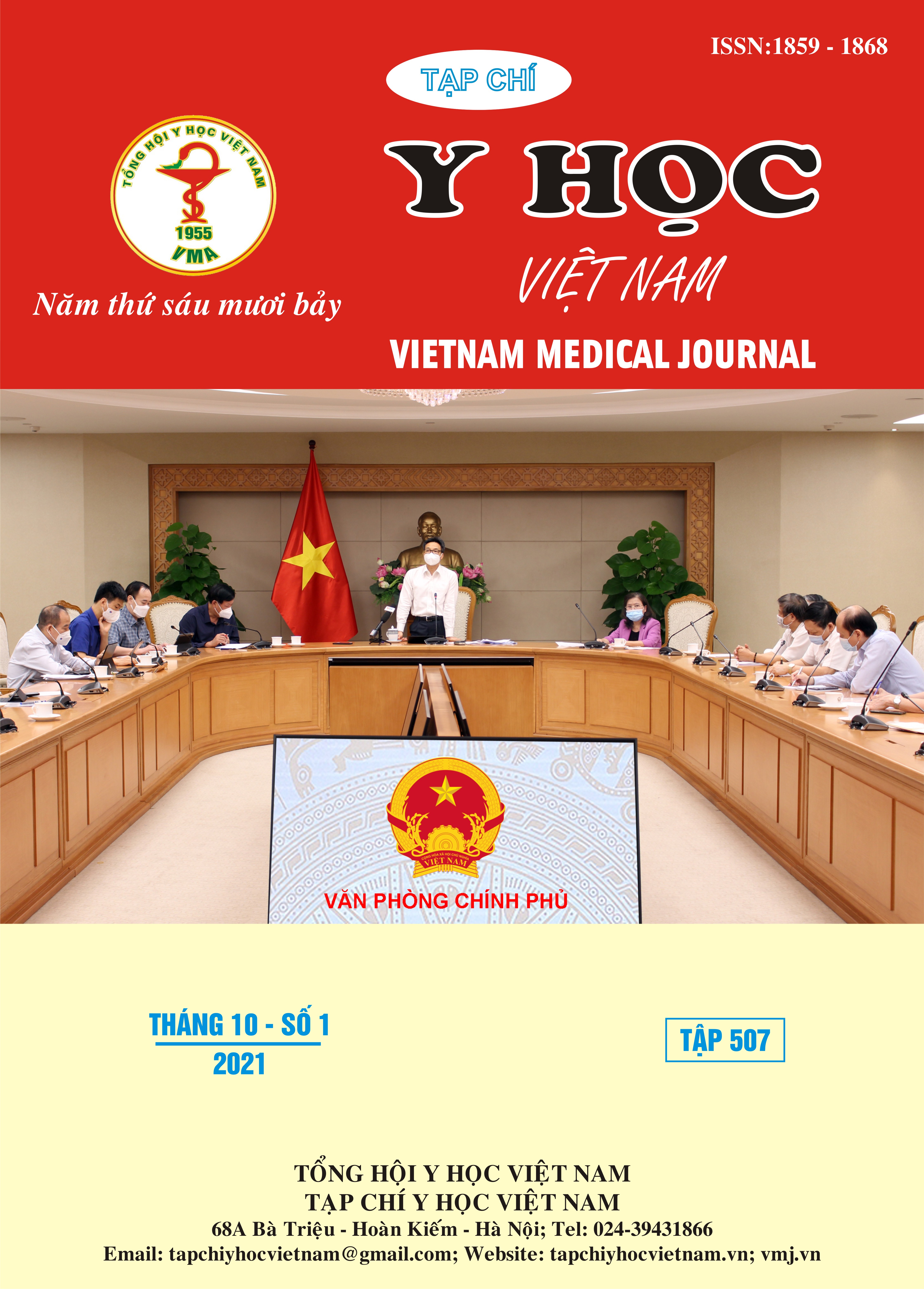RESULT OF SURGICAL EXCISION OF GINGIVAL GRANULOMA IN PREGNANT WOMAN
Main Article Content
Abstract
Objective: To evaluate the results of surgical treatment of gingival granuloma using surgical knife in pregnant women at National Hospital of Odonto-Stomatology Hanoi. Subjects and methods: The study was conducted on 30 pregnant women in pregnancy II (from the 13th to 24th week of pregnancy), having gingival pyogenic granuloma, healthy and normal pregnancy. Subjects were clinically examined to evaluate the gingival index (GI), gingival bleeding index (SBI), and assess the status of gingival granuloma, consists of: location, hypertrophy at the time of surgery, after surgery 1 month, 2 months. Treatment methods: Scaling, gingival granuloma excision using surgical knife under local anesthesia, treating the causes of inflammation, combined antibiotics, anti-inflammatory, pain relieved medicine, guided oral hygiene. The results were analyzed by medical statistics software. Results: The gingival granuloma in pregnant women has a large size, mainly grade 3 hypertrophy with the rate of 73.3%. It was observed commonly in the maxillary incisor area with the rate of 53.3%. The degree of gingivitis (GI) at the gingival granuloma site was related statistically to the gingival hypertrophy (p<0.05). GI, SBI at the surgical site had a significant decrease after 1 month post-op, and continuing to decrease after 2 months post-op. The difference was significant statistic with p < 0.001. The recurrence rate of gingival granuloma was 6.7%. Conclusion: The excision procedure of gingival granuloma using surgical knife is really effective in improving the gingival status of pregnant women
Article Details
Keywords
Pyogenic granuloma, pregnant woman
References
2. MascarenhasP, Gapski R, Al-shammari K, Wang H.L (2003). Influence sex hormones on the periodontium, J.Clin. Peridontol, 30: 671-681.
3. Gordon-Nunez MA, de vasconcelos M, Benevenuto TG, Lopes MF, et al (2010). Oral pyogenic granuloma: a retrospective analysis of 293 cases in a Brazilian population, J Oral Maxillofac Surg, 68 (9): 2185–8.
4. Saravana GH (2009). Oral pyogenic granuloma: a review of 137 cases, Br J Oral Maxillofac Surg, 47(4): 318–9.
5. Al-Khateeb T, Ababneh K (2003). Oral Pyogenic granuloma in Jordanians: A retrospective analysis of 108 cases, J Oral Maxillofac Surg, 61:1285–8.
6. G. Manegold-Brauer, H. U. Brauer (2014). Oral pregnancy tumour: An update, Journal of Obstetrics and Gynaecology, February, 34: 187 –188.
7. Amar S, Chung KM (1994). Influence of hormonal variation on the periodontium in women, Periodontol2000; 6: 79 – 87.


